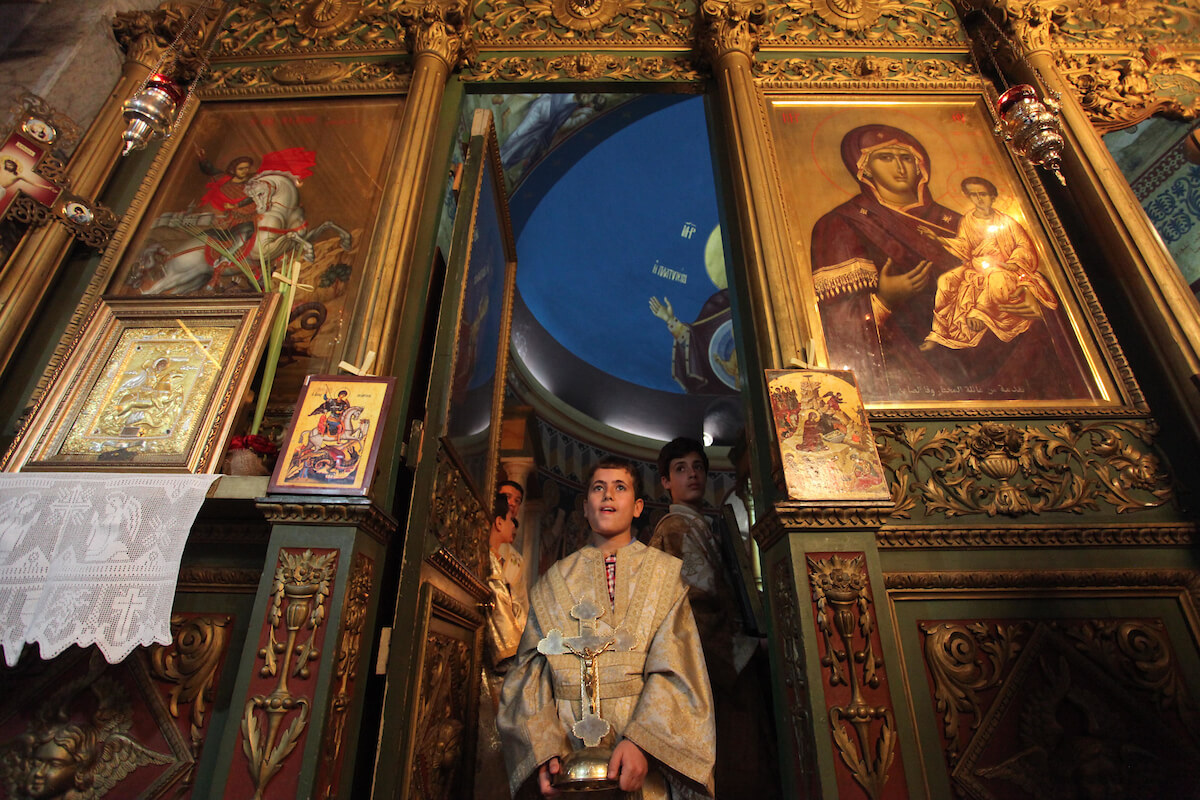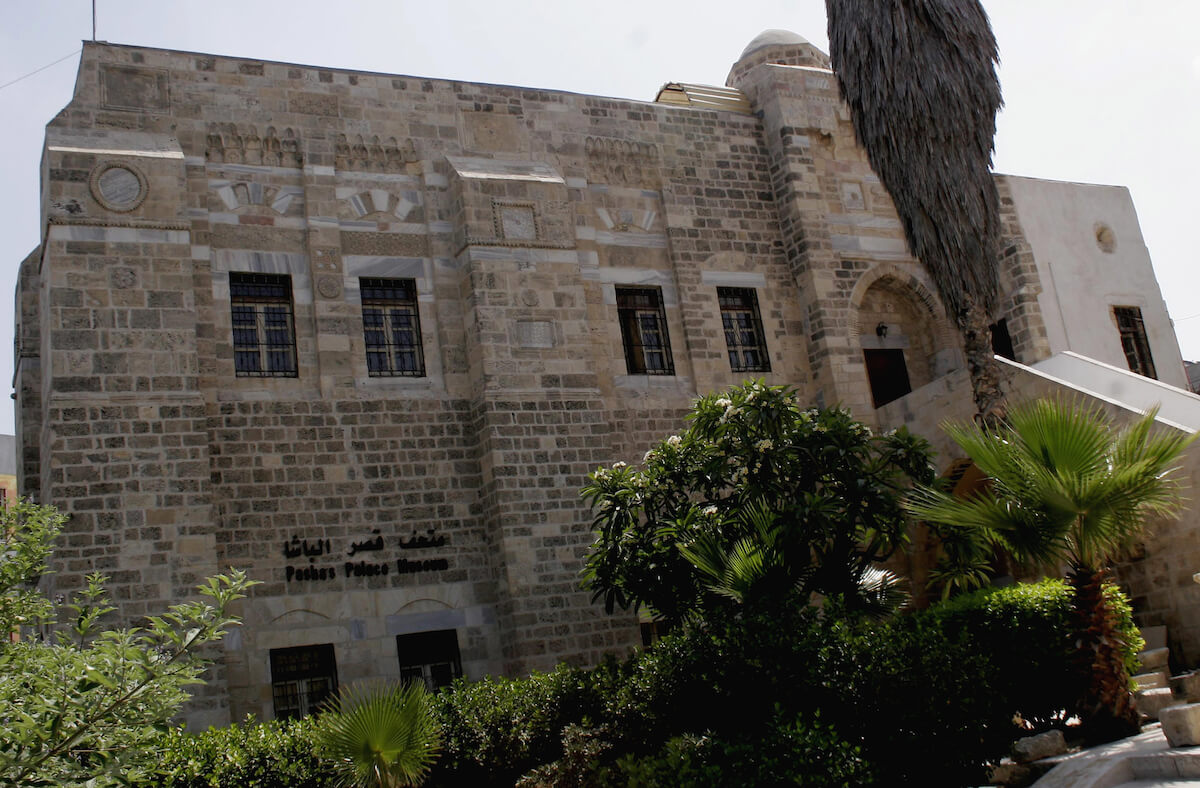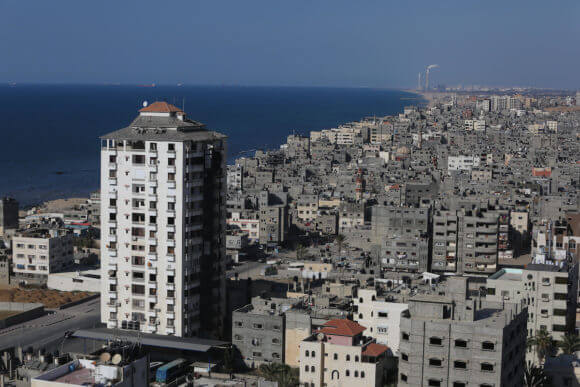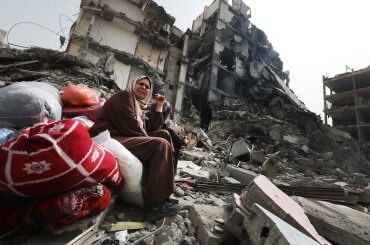Opportunities to visit Gaza come rarely. Despite occasional misleading reports to the contrary, the blockade remains robust. Promises to repair sewage disposal go unfulfilled, electricity is still sporadic and unpredictable, poverty and unemployment are among the world’s highest, and stunted childhood growth and anemia are visible everywhere you look. Predictions that Gaza would be “unlivable” by 2020 are no longer predictions. They are the days and nights of Gazans.
The treasured opportunity came for me and a small group of friends on a warm day in mid-October. Permits to enter Gaza aren’t obtained easily; only one other person was waiting that morning to enter the large Erez checkpoint terminal. The large “Welcome to Erez” sign should not be taken by the visitor at face value.
When our opportunity came, we wanted our time there to be worthy of the privilege. We went to see, to listen, to witness, to stand with, and then to tell. A place so inaccessible and so compelling deserves our full attention and our best intentions, but as we learned in our recent visit, getting lost in the tedium of the permit process and then the rush to pack the time with meetings and briefings could have caused us to miss the glory that is Gaza.
Our four days there included a Friday when businesses and organizations are closed. What to do? But through sheer good fortune (one might say dumb luck), our Friday in Gaza proved to be a bit miraculous. Friends there had invited us to join them in the morning for a special service at St. Porphyrios Greek Orthodox Church. Established in the year 420, its origin was contemporaneous with the Church of the Holy Sepulchre in Jerusalem and Church of the Nativity in Bethlehem, thus memorializing the prominent place that Gaza held in that epochal moment of history when Christianity came to the Roman Empire and changed the world forever.
From the ancient ornate beauty of St. Porphyrios, we went to meet Dr. Ayman Hassouna, a tour guide affiliated with the Ministry of Antiquities who gave us his Friday to show us some of the other Gaza.

In a quiet neighborhood of Gaza City, behind a wall, stands the Pasha Museum, a stately home from the early Ottoman era that now houses local antiquities. We saw immaculately inscribed scrolls of Quranic verses, we saw pottery and statuary, we saw a magnificent palace from a time when people could create beauty in Gaza without fear of bombing.
We drove to Jabaliya then, getting glimpses on the way of the nearly depleted fishing industry; now only nets full of crabs that will bring little profit. We stopped at a Byzantine church from 444 which is now a site of active excavation and restoration. With stunning, well-preserved floor mosaics, it was a resting place for pilgrims, like us. Ayman told us we were the first to visit the site and as we explored and viewed with awe, Ayman’s son told us of his dreams for university.
Finally, as the mid-day calls to prayer sounded, we arrived at our last stop. We waited in the shade as our guides and friends walked to a local mosque for prayers, then entered the site of a vast Byzantine monastery also undergoing active excavation. It housed a couple of hundred monks and boasted an elaborate system of thermal baths. Walking the large site under the intense, bright sun, our view took in the monastery ruins as well as the area beyond. An elaborate bustling place for the faithful of nearly two thousand years ago set now amidst undeserved privation.


For a few hours, we saw Gaza for the first time. And we were reminded, as we obviously needed to be, not to fall into the trap of disaster tourism, thinking of Gaza only as the beleaguered tiny strip of imprisonment, of bombs and missiles, of abominable injustice and suffering. On this day we saw it anew, as a thriving center of the ancient world, as a place of significance for millennia. At the crossroads between the cultures and civilizations of Africa and Asia, Gaza mattered on the world stage.
The glory that was Rome is now extinct, but the glory that is Gaza lives on. It lives today. It lives in the remarkably talented young people who pursue their educations and ambitions amidst poverty, designing new systems of renewable, sustainable energy; astutely using the internet to create new opportunities for themselves; and creating art in film, canvas and word to assert their claim on identity while proclaiming that they are not numbers. It lives in the insistence on Palestinian sovereignty and nationhood, in the persistent determination to march in return to their homelands, and in steadfast resistance to colonialist displacement. And not least, it lives in the preservation of these remarkable sites of historical greatness. In fact, we could not fail to notice that the current ruling authority in Gaza supports and sustains these projects without fanfare while Israel too often uses archeology as a means to carry out ethnic cleansing.
In the end, it is grandeur that endures, not small-minded, greedy grabs at dominion and power. On that Friday, we had a glimpse of the grandeur of Gaza. If you are fortunate enough to go, I hope you will include that in your itinerary, too.



Many thanks for this really beautiful posting.
I had heard that the St. Hilarion Church in Jabalia (the one with the mosaics dated to 444) had been either destroyed or severely damaged in the 2014 bombing, from a relatively reliable source. Gunkel’s report sounds like very good news if the floor is still there. Was it damaged at all?
Middle East Report
No. 152, The Uprising (May – Jun., 1988), pp. 13-17 (5 pages)
Gaza Diary by Melissa Nusbaum 7th February 1988.
“The British” She continues “imposed curfews, demolished homes, killed many. I remember in the old city of Gaza the army used to come and knock on doors…Indian and Australian soldiers of empire …just like Israelis. Once when an Israeli military governor came here to see us, he wanted to bring gifts for our girls. I told him “The best gift would be if you were the last governor”.
Yusra al Barbiri Palestinian Womens Union. Gaza
Suffering for years under the fascistic boot of Zionist neo-Nazis, the courage and resilience of the imprisoned Palestinian inhabitants of Gaza never cease to amaze me. Historians will write very favourably of them.